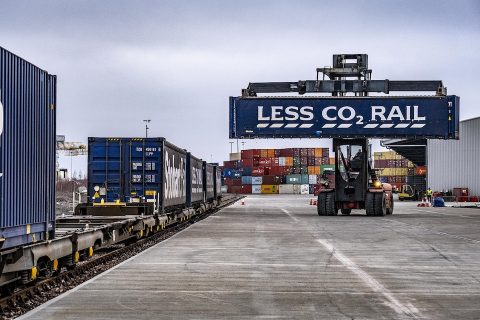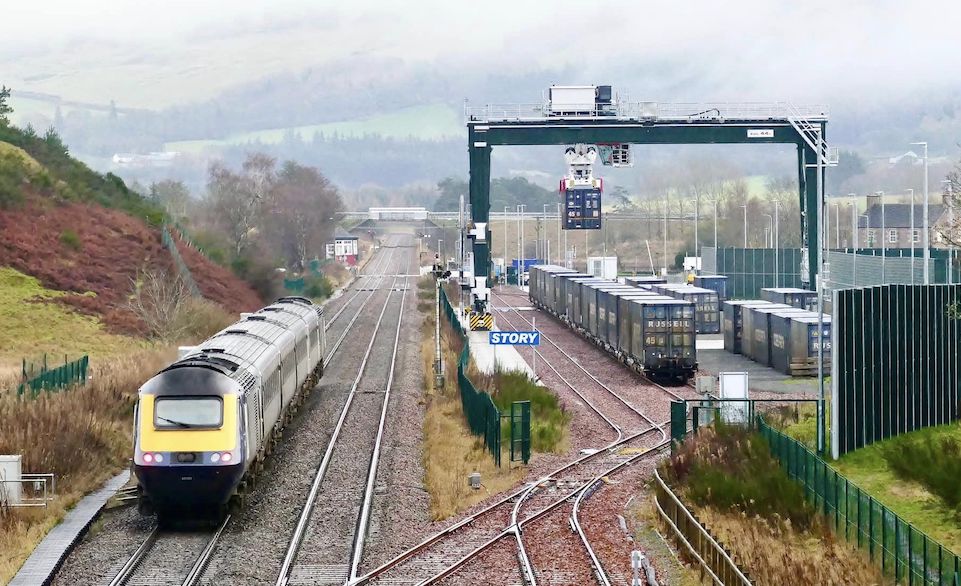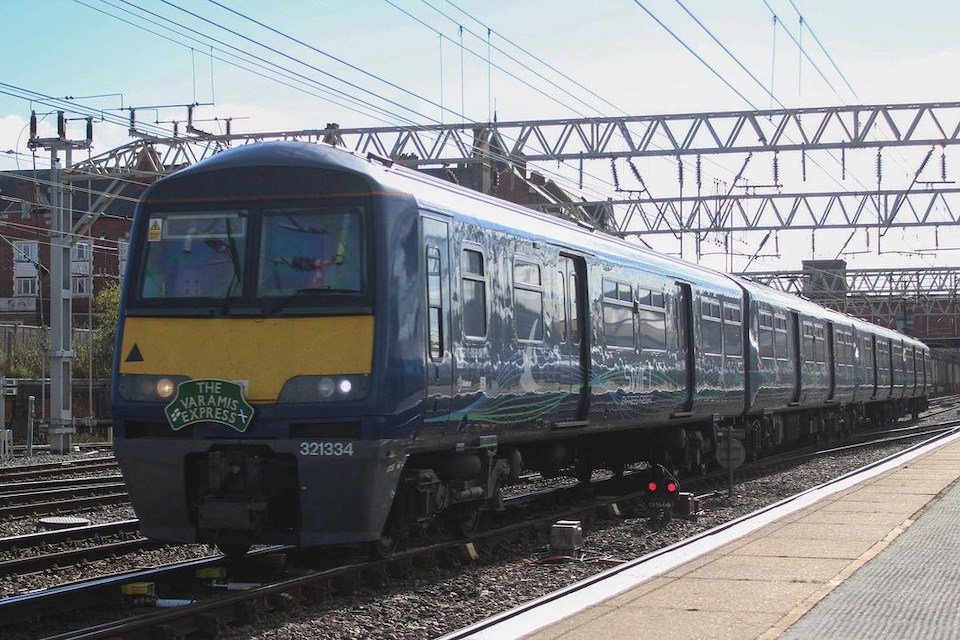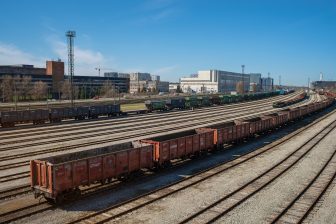
‘Rail freight has to offer solutions compatible with modern logistics’
Decarbonising transport must be a primary objective to reach Scotland’s stringent climate target goals. The government in Edinburgh has set the deadline five years earlier than the rest of the UK, with a net-zero target north of the border of 2045. Rail freight has a big role to play in achieving that goal. The focus needs to be on the modal shift from road freight, says Martin Bignell, the Scotland and North representative for the Rail Freight Group.
There is a huge Scottish road freight market that is almost untouched by rail freight, says the Rail Freight Group’s spokesman there. Over fifty-million tonnes of freight is lifted in Scotland and travels more than 100 kilometres domestically within the country. The challenge to achieving 20 per cent of freight by rail is to understand what is moving and what loads are actually under the curtain sides of the heavy goods trucks that ply Scotland’s roads every day.
Maximise asset use for operators
By understanding the nature of the loads moved domestically within Scotland and developing rail freight solutions that meet those requirements, the national economy can take a further step towards finding a commercially viable means of modal shift in favour of rail. Bignell suggests that fast, frequent, shared user shuttle-style trains serving provincial cities, such as Aberdeen and Inverness and beyond, must have a role. He says that services like these can help maximise asset use for operators and provide attractive options for customers. That comes hard on the heels of official statistics, released just this week, showing that rolling stock utilisation is weakening across the industry at large.

Road transport statistics, for the most relevant full year available (2020), show that 93,3 million tonnes of freight were lifted in 2020. Of that total, 44 per cent (41m tonnes) travelled less than 100km (62 miles), and 17 per cent (15,9m tonnes) of that freight travelled fewer than 25km. Perhaps more importantly though, the analysis of weight and distance moved by road, reveals that a total 11,6 billion tonne-kilometres (tkm), 65 per cent (7,5b tkm) was entirely domestic.
The remaining 35 per cent (4,1b tkm) was cross border – mainly between Scotland and England (although Scotland has a healthy trade with Northern Ireland too, from ports on the south west coast). Figures reveal that Scotland is not nearly the net importer that is popularly believed, with almost the same weights crossing in each direction – 15,6m tonnes imported against 12m tonnes heading south. That’s back load potential is critical to the business model of any operator, regardless of their mode of transport.
Next steps for rail freight
“It doesn’t take a statistician to realise there’s plenty of traffic to go at if an attractive rail offer can be made”, says Bignell in an encouragement to rail freight operators. He says there is an immutable purpose for every journey, and that makes the margins tight – to a degree that makes modal shift something of a gamble. “Almost no freight, whether by road, rail or maritime, is discretionary. It is a derived demand of another requirement, typically to either make things, or to get them to places where they will be sold, or reprocessed for another purpose. There are thousands of individual companies involved in these supply chains each seeking to optimise their businesses and succeed in a competitive marketplace. To achieve modal shift and climate change goals, we need to recognise that rail freight customers are commercial customers.”
Efficiently configured terminal capacity required
Rail freight has to offer a solution that is compatible with modern-day logistics networks. Bignell says it has to be competitive with other modes, in terms of cost, performance, reliability, predictability, and resilience. “That comes down to raising awareness of rail freight within the freight and logistics sector, where it operates, what services are running, what opportunities are available”, he says. “Ensuring the facilities are in place to allow efficient rail freight services to operate. Besides network capacity and capability, this means having efficiently configured terminal capacity where freight can transfer between modes and value-adding services can be offered to enable the rail offer to be integrated into the supply chain.”

It’s well known in economic theory that handing adds costs, and modal shift often means double handing. However, if that modal switch takes place at a point in the supply chain where value is added, the costs are already built-in to the product. For example, if modal transfer takes place at the point where bulk loads are repackaged for consumer distribution, additional costs are minimised, and may well be reduced. If that sounds like the model for freeports (green freeports in Scotland) you would be correct in your observation.
Cross-border express logistics lead the way
Whether at a freeport site or not, Bignell concludes that rail freight may well be suited to huge bulk loads, but needs to address smaller customers, and develop improved ways for smaller customers to buy rail freight solutions as easily as they can road or maritime solutions. A tall order perhaps, given the almost complete eradication of the siding network and pick-up goods services of decades bygone. Nevertheless, the modern, fleet of foot, express logistics operators could be there to take on that workload. The early adopters of express logistics by rail are already operating cross-border services from the outset.
“Rail freight to and from Scotland benefits from competition between operators, which drives service improvements and encourages them to find and develop new partnerships with major logistics operators and shippers”, says Bignell. “We are seeing innovation in the use of low carbon fuels where lines are yet to be electrified. Before too long, companies will find it increasingly difficult and expensive to undertake long distance freight journeys as efficiently as today when zero emission HGV’s with different duty-cycle characteristics are the only trucks available to buy. This could amount to a tidal wave of new demand ramping up in the next 15 years that the rail network and wider industry can prepare for now. This will need national-level strategic thinking as infrastructure takes many years to plan and deliver, making recent planning decisions against new terminal capacity a particular setback to accommodating this potential future demand.”





“Rail freight customers are commercial customers”… – and
accordingly:
1.
Electrification, yes, but a robust, redundant and safe.
2.
Track standard, not optimised for todays traffic and speed – devastatingly short of “height” for future added demand – since long with b.f.d. passed, urgently now is due for being shifted out!
(Reinvestment, any infrastructure investment, claiming an investment, has for future added demand , now to be with surplus, redundant, capacity!)
Quality pays – promptly!